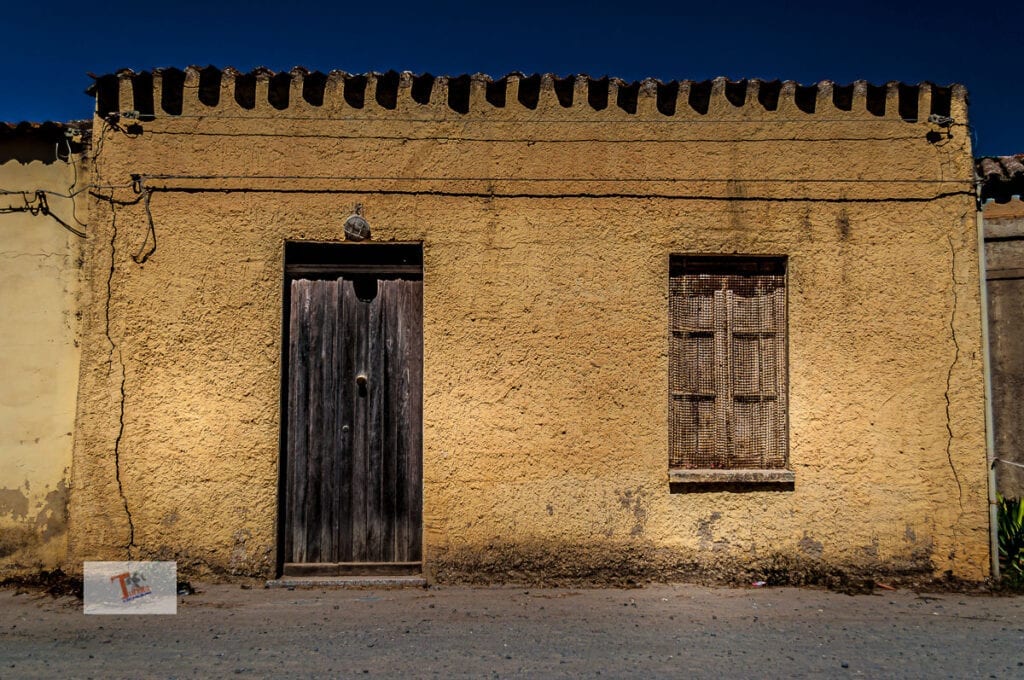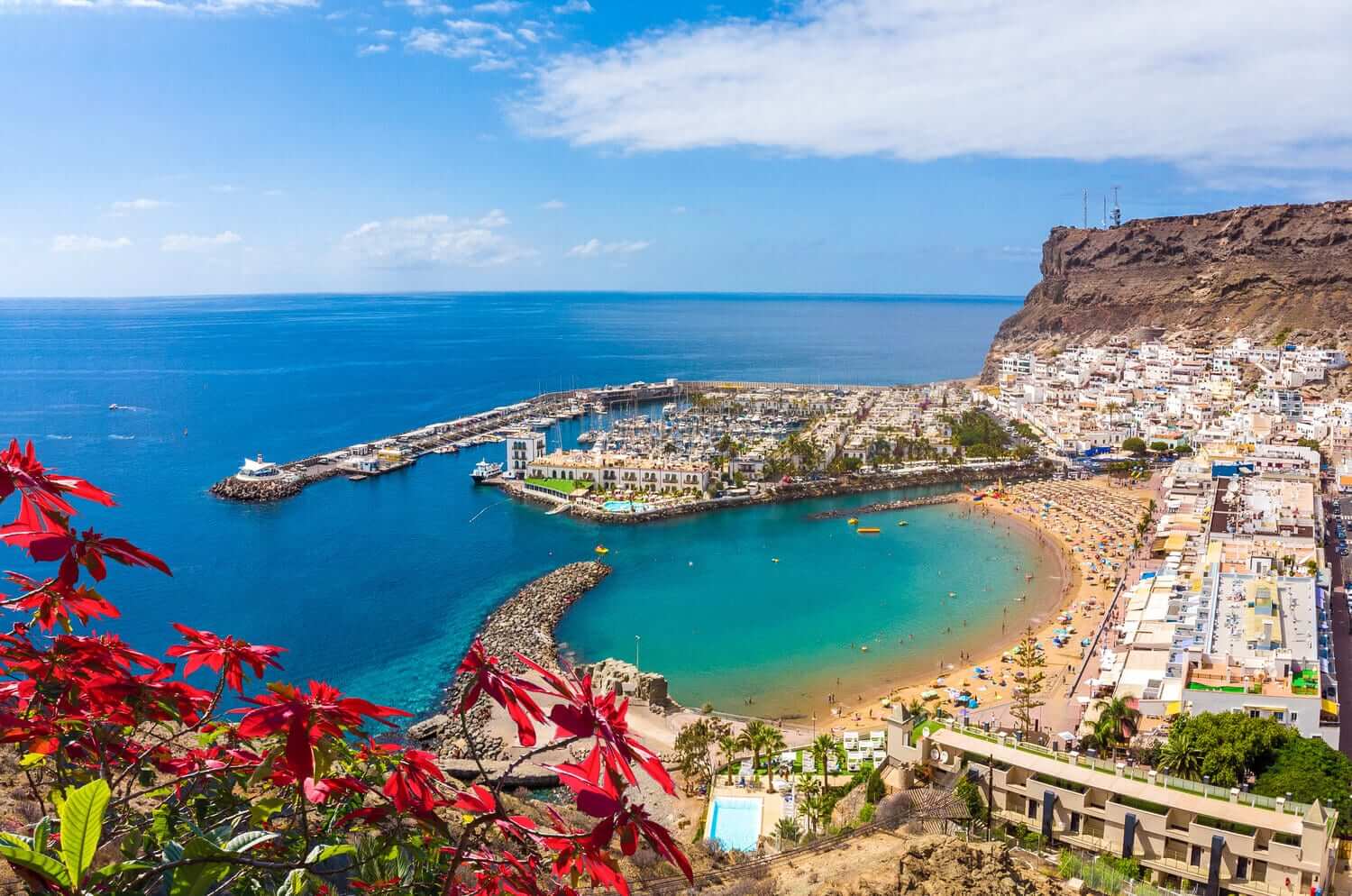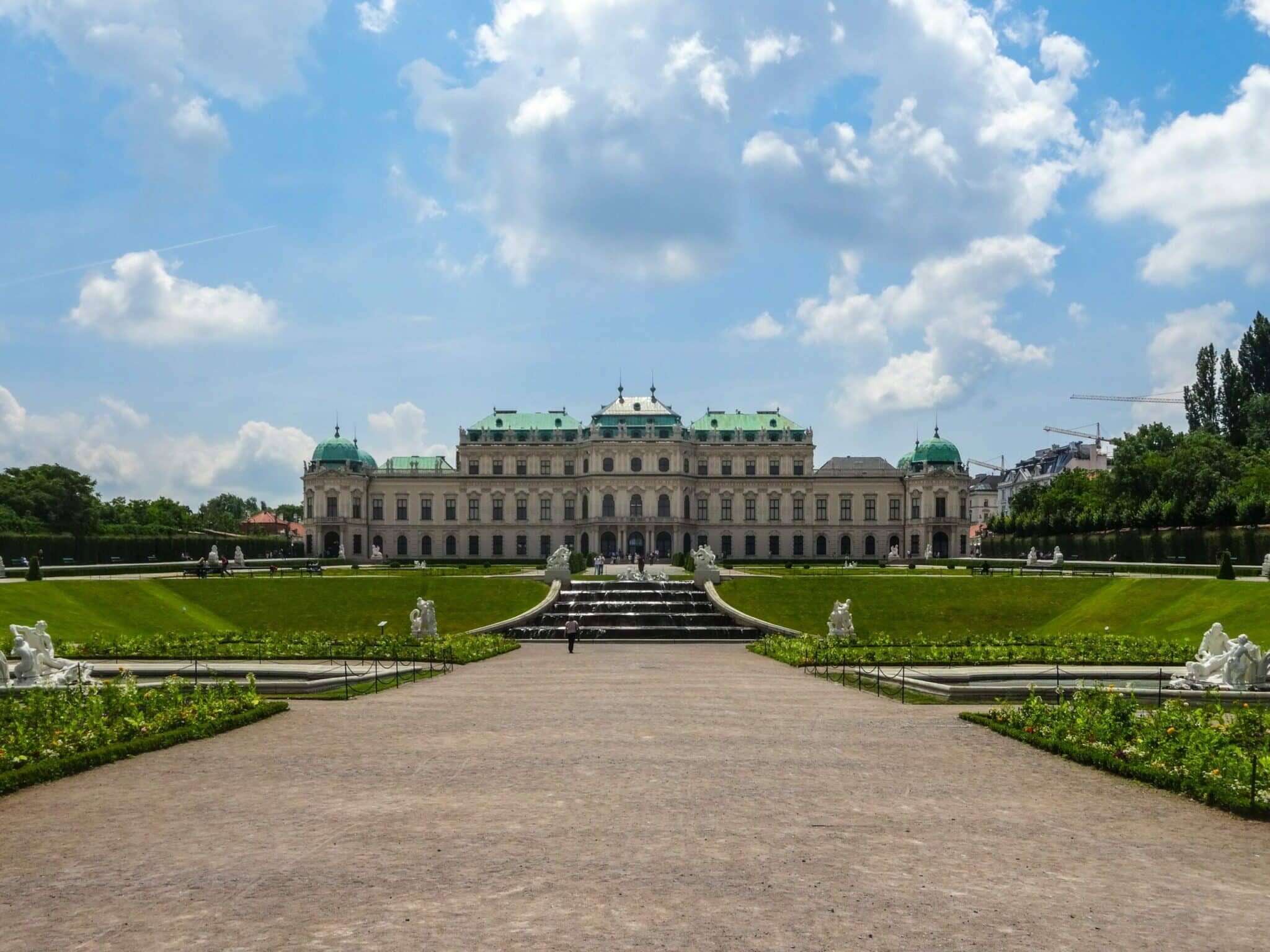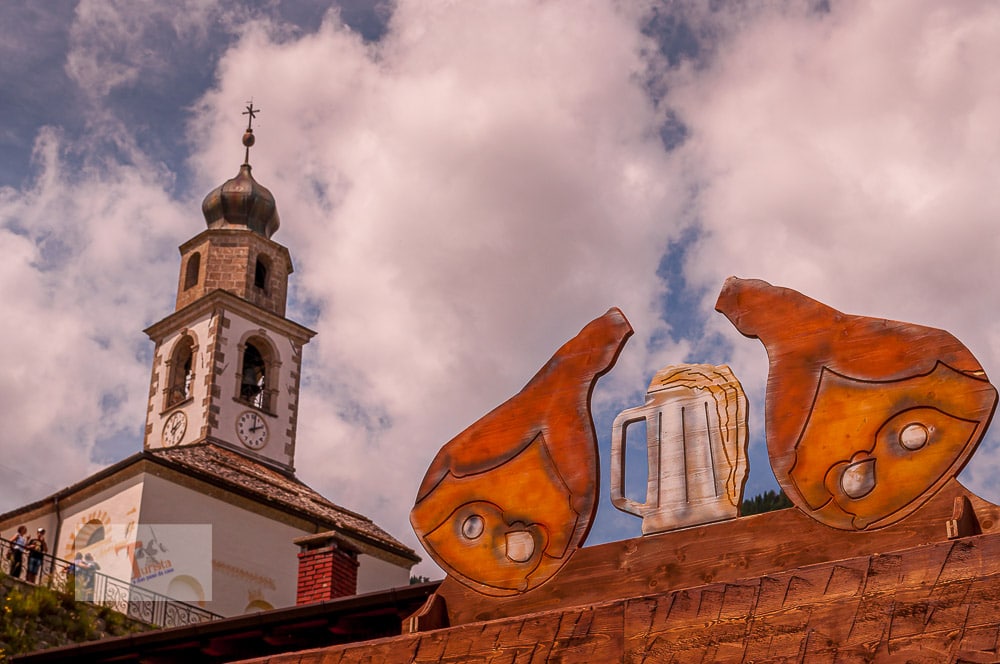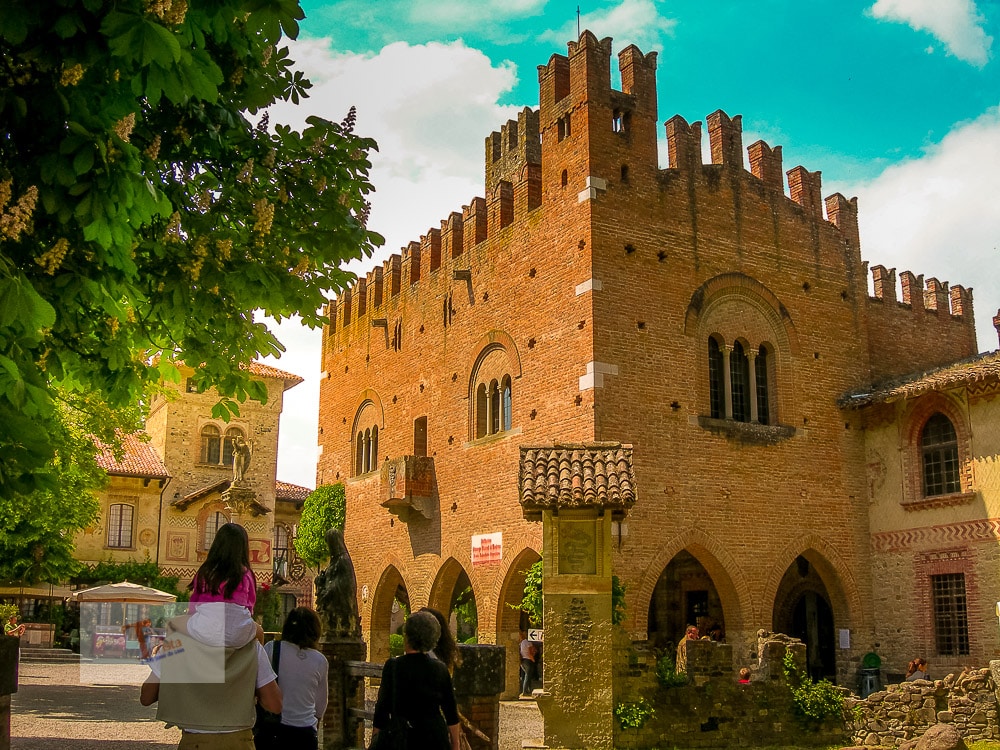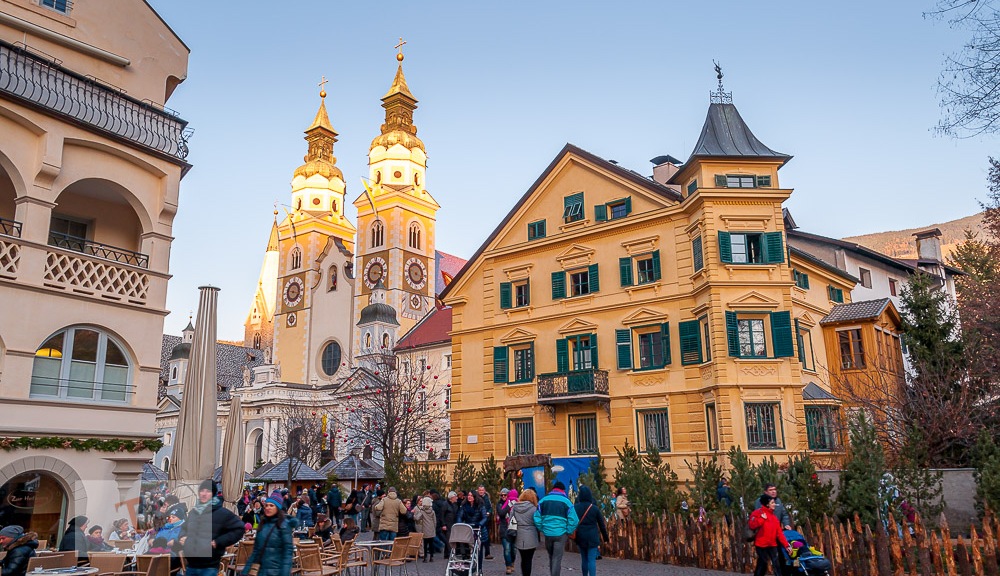A very small village with tiny houses that remind us of those in certain western films. We are not in Texas, but in San Salvatore di Sinis, a small village in the province of Oristano, which is part of the municipality of Cabras, located along the road that leads to the beach of Is Arutas.
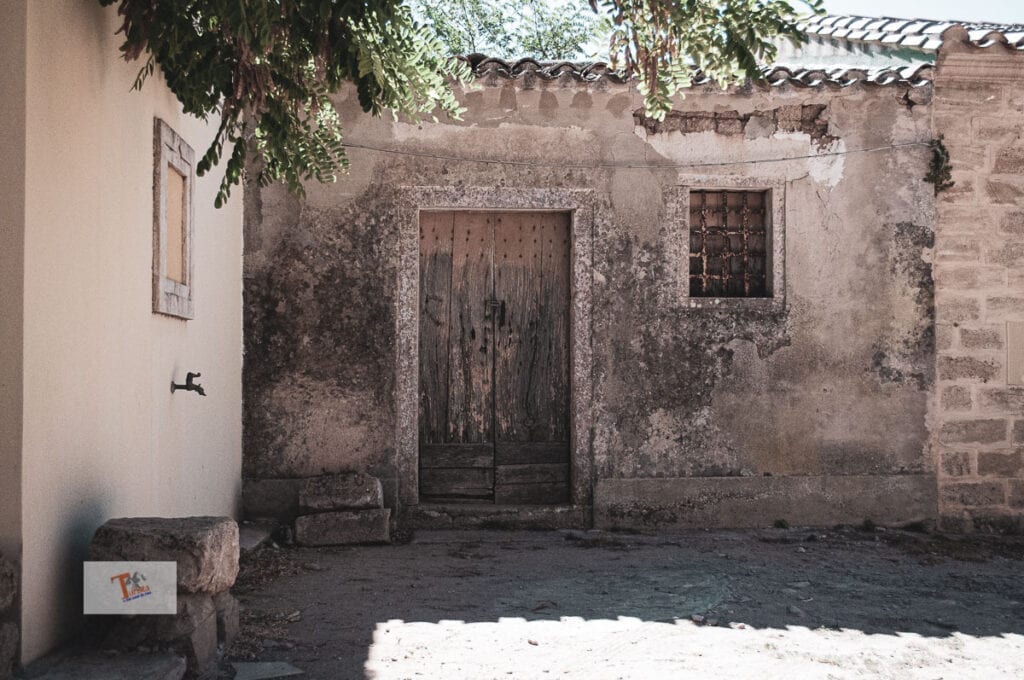
Going to the discovery of authentic Sardinia, not the glossy one of certain magazines and tour operators, we came across a tiny village with one-story houses and a huge square.
This intrigued us not a little, especially since a few meters from where we parked the car, there is a room with an entrance door similar to that of the saloons that we admire in many western films.
San Salvatore di Sinis, at first glance, looks like an ancient uninhabited village. The doors and windows are all closed. We do not meet a soul, apart from a few tourists intent on taking photographs. The streets of the town are made of beaten earth. The wind blows between the houses. The classic ball of brambles carried by the wind would be missing to swear to be on the set of a film.
We look around. Absolute emptiness. Only these low houses, aligned, attached to each other and nothing else. We are right on the set of a western movie. Or at least, here, in this small remote village in Sardinia, some western films were shot at the end of the 1960s.
The town and its hills seem to have come out of a postcard from Mexico.
Films shot in San Salvatore di Sinis
No. That it was Cinecittà, but here, among the films shot there are: “Garter Colt” from 1968 and Sergio Leone is said to have shot some scenes of the film “For a fistful of dollars”. But there are no certainties of this. In order to adapt San Salvatore di Sinis to the appearance of a western village, the houses underwent some changes that can still be seen today. A real Saloon was built, but it was destroyed in a fire and was never rebuilt.
The decline
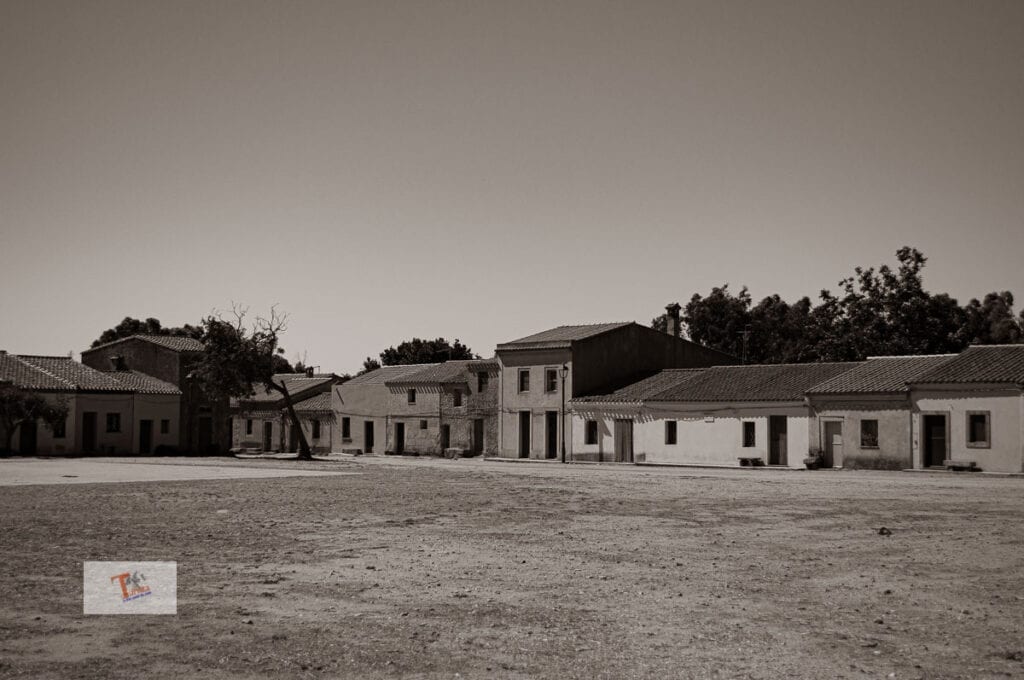
The decline of the village began once the set was dismantled, also because the costs to shoot in this place were exorbitant. Producers and directors chose the cheaper Cinecittà. This is a village of medieval origin and takes its name from the small church that stands in the center of the town.
The church
In addition to being the set of films, San Salvatore di Sinis offers a seventeenth-century country church and its ancient hypogeum, frequented for the worship of water since the Nuragic era.
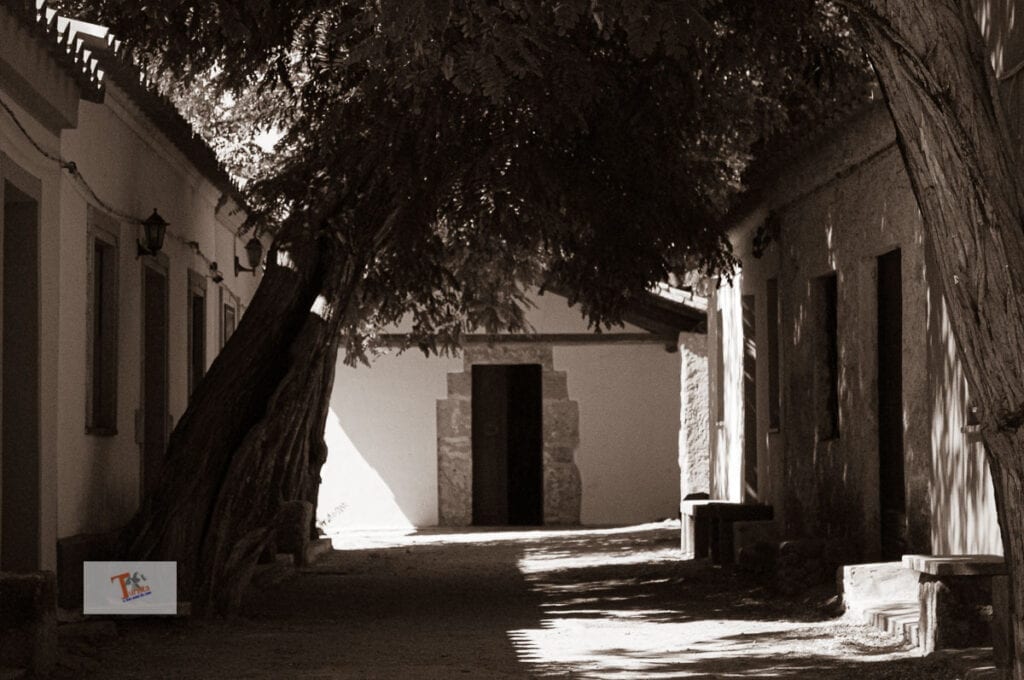
It is an environment partly excavated in the rock and partly built in masonry and sandstone and consisting of 5 rooms, which develop around a central circular room, in which the nuragic sacred well dominates. Rebuilt in the 6th century, the hypogeum is a testimony to the use of this place as a room for different religions. Of nuragic order, it became time for the Roman gods, but on one side you can also see an inscription praising Allah. Scholars assume that the latter is the result of an assault attempt by Islamic marauders in medieval times.
The race of the barefoot
If you happen to pass by these parts between the end of August and the beginning of September, don’t miss the traditional “Corsa degli scalzi”. It seems to date back to the 16th century, when the Spaniards ruled this land.
To escape one of the numerous Saracen raids, the inhabitants had to rescue the statue of the saint of the village as far as Cabras to protect it from invaders. Since then this ritual has been repeated every year.
How do I get to San Salvatore di Sinis
San Salvatore can be reached from Cabras following the provincial road 6 which runs along the pond.

